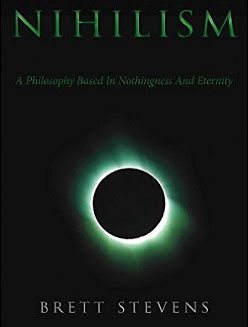Scientific Consensus
The term “consensus” like “collective” is loaded because half of humanity fears the hive mind and its tendency to ruin everything it touches through idealistic thinking based in the desires of individuals instead of the likely tendencies of our natural world.
During the most recent pandemic, which turned out not to be anywhere near as serious as promised, and probably was an insurance scam from the people falling down in the street in China to the many in the USA who showed up for free treatment, the term “scientific consensus” got bandied out a bit.
As Michael Crichton points out, consensus thinking is the opposite of how an actual scientist operates:
According to Sagan and his coworkers, even a limited 5,000 megaton nuclear exchange would cause a global temperature drop of more than 35 degrees Centigrade, and this change would last for three months. The greatest volcanic eruptions that we know of changed world temperatures somewhere between 0.5 and 2 degrees Centigrade. Ice ages changed global temperatures by 10 degrees. Here we have an estimated change three times greater than any ice age. One might expect it to be the subject of some dispute.
But Sagan and his coworkers were prepared, for nuclear winter was from the outset the subject of a well-orchestrated media campaign. The first announcement of nuclear winter appeared in an article by Sagan in the Sunday supplement, Parade. The very next day, a highly-publicized, high-profile conference on the long-term consequences of nuclear war was held in Washington, chaired by Carl Sagan and Paul Ehrlich, the most famous and media-savvy scientists of their generation. Sagan appeared on the Johnny Carson show 40 times. Ehrlich was on 25 times. Following the conference, there were press conferences, meetings with congressmen, and so on. The formal papers in Science came months later.
This is not the way science is done, it is the way products are sold.
Funny he mentions products being sold because the consensus system in the US is dependent on grants and who will approve of them:
Despite these very low success rates and paylines that afflict the careers of the great majority of scientists, the peer review system has been claimed to be the best system there is to allocate funding for biomedical research (see, for example, Racker, 1979). This consensus system, however, has never been evaluated scientifically against an alternative ( Düzgüneş, 1999). Thus, the reputation of the current system is not based on systematic comparisons against other unbiased and more rational systems.
Perhaps the earliest challenge to this system at NIH was made by John McGowan (1992), who was at the time the Director of Extramural Research at the National Institute of Allergy and Infectious Diseases (NIAID). He revealed that proposals to investigate human immunodeficiency virus (HIV) infections of macrophages had been rejected by a study section because “the literature does not support the hypothesis that HIV can grow in macrophages” ( McGowan, 1992). And this is untrue! Regrettably, study sections have had too much power over what projects should proceed and which ones should be scrapped. As we have stated before, “such ‘science by consensus’ is unhealthy for the unfettered and productive pursuit of biomedical science” ( Düzgüneş, 1999).
There is money involved, but it is not free market money; it is public image money, since bureacracies grant funds to whatever is popular, namely because the nature of a bureaucracy is to run through a process that tries to use methods (not goals) to buy off every group that complains. It addresses all the needs, and therefore, has no direction.
The “consensus” then reflects political reality, but specifically political reality among those who are already vested in the system, which because they are behind the wall of power, tend to be completely disconnected from ordinary life and the price of eggs.
Consequently, scientific consensus tends to suppress anything inconvenient to those with the purse-strings, and therefore, inverts science itself from a process of discovery to an echo chamber for confirming biases:
While appealing to scientific consensus is a legitimate tool in public debate and regulatory decisions, such an appeal is illegitimate in scientific discussion itself. We provide examples of decades-long scientific consensus on erroneous hypotheses. For policy advice purposes, a scientific statement or model should be considered as the subject of proper scientific consensus only if shared by those who would directly benefit from proving it wrong. Otherwise, specialists from adjacent fields of science and technology should be consulted.
Like with PC/DEI, scientific consensus shuts down the debate on many issues, narrowing the field to include only what the system already supports. It therefore becomes circular, like cherry-picking, in that scientific study is undertaken only to confirm what is already supported by the system, and therefore, the system cannot tell when it is wrong or even just imprecise in its estimates.
The idea of consensus itself implies facts or notions which cannot be questioned, and behaves like a political orthodoxy as a result:
The notion of a monolithic “science,” meaning what scientists say, is pernicious and the notion of “scientific consensus” actively so. The route to knowledge is transparency in disagreement and openness in debate. The route to truth is the pluralist expression of conflicting views in which, often not as quickly as we might like, good ideas drive out bad. There is no room in this process for any notion of “scientific consensus.”
The most skeptical of us see herd behavior as the common expression of human pathologies, and see how scientific consensus is an extension of herding into ideological conformity disguised as learning:
Herding can be a rational behavior. It would not be a good use of time or money for every dentist to conduct an independent study to assess the evidence and determine whether sugarless gum is good for dental health. However, herding can lead an entire scientific community to converge on the wrong answer, and they typically won’t know whether they’ve converged on the right or the wrong answer.
We can see how a dangerous emperor-has-no-clothes situation could easily arise. Suppose a dentist questions whether chewing gum really is good for dental health. He or she considers raising the issue at a convention but then remembers that most dentists recommend gum and worries that they’ll be mocked for questioning the consensus view. So they decide to keep quiet, the field moves on, nobody’s beliefs are challenged, and no new evidence is collected.
Crichton again:
I want to pause here and talk about this notion of consensus, and the rise of what has been called consensus science. I regard consensus science as an extremely pernicious development that ought to be stopped cold in its tracks. Historically, the claim of consensus has been the first refuge of scoundrels; it is a way to avoid debate by claiming that the matter is already settled. Whenever you hear the consensus of scientists agrees on something or other, reach for your wallet, because you’re being had.
Let’s be clear: the work of science has nothing whatever to do with consensus. Consensus is the business of politics. Science, on the contrary, requires only one investigator who happens to be right, which means that he or she has results that are verifiable by reference to the real world. In science consensus is irrelevant. What is relevant is reproducible results. The greatest scientists in history are great precisely because they broke with the consensus.
Consensus is invoked only in situations where the science is not solid enough. Nobody says the consensus of scientists agrees that E=mc2. Nobody says the consensus is that the sun is 93 million miles away. It would never occur to anyone to speak that way.
Understood properly, consensus is the opposite of a quest for understanding of our world. It is instead an agreement that we will avoid understanding the parts of our world that offend us. Political Correctness is a natural growth of this: it bans certain ideas so that only “safe” ideas remain, a lot like how laws ban certain behaviors and assume that everything else is good and fine.
Consensus represents human individualism at its peak, because for someone to be an individualist, something has to be biologically wrong with them and they therefore want to crusade against biology, genetics, history, and reality. These are self-destructive people because something is biologically wrong with them and therefore, something is also mentally wrong with them. They are sick animals who badly need violent Darwinism.
Healthy people do not need individualism, which in groups forms collectivism and tends to become militantly anti-realistic. They find a purpose in life, adapt to its challenges, and go about living for the sake of living, that is, to enjoy life itself. Those who cannot do this become individualists, then egalitarians, and finally demand “consensus.”
Tags: consensus, echo chamber, groupthink, herd behavior, hive mind, hugbox, mob rule, scientific consensus










